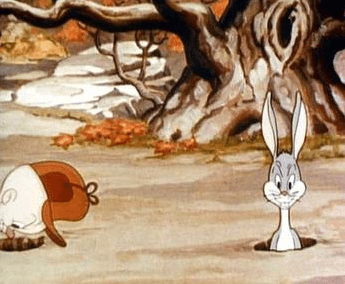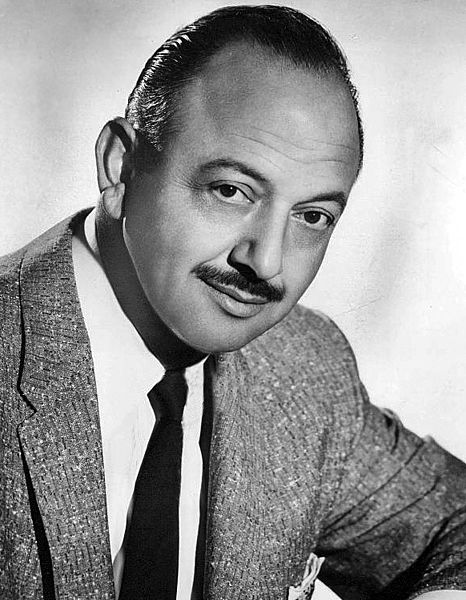From the iconic phrase of what’s up doc to the mischievous encounters reigning the screens on Cartoon Network, bugs bunny has been a predominant character for every kid in the 90s and 20s. It remains relevant even today, making it one of the most successful characters by Warner Bros. So, what is it about it that makes it so popular? But, before we get to that, let us have a look at how it all began!
Origin of Bugs Bunny
Finding the origin of bug’s bunny is complicated. You cannot just search through the history and point out its first appearance. Initially, Bugs bunny did not even appear as the character we know of today. There are many stages of the iconic rabbit to find its roots. Bugs Bunny first appeared in Porky’s hare hunt, a remake of Porky’s duck hunt. In the movie Porky’s hare hunt, the Daffy duck is in a rabbit costume. The character looked short and young as an infant and had an unusually shaped body.
The cartoon figure was loud and energetic. Rather than escaping, the purpose throughout the film was to annoy the hunter. Because of these qualities, he was a popular addition to Warner Bros. Bugs Bunny was then officially released as a character in the 1940s, A wild hare. The cartoon character looked like an adult rather than a child. It stood straight but poised. He also said his iconic catchphrase, What’s up, Doc?. 
In 1940, the character was designed by Tex Avery, Bob Givens, and Mel Blanc. They gave the bunny the attitude and personality of the character we know today.
Why is Bugs Bunny So Popular
Bugs Bunny was gifted collective talents by the artists. Throughout the years, he was reshaped by Friz Freleng, Bob Clampett, and Chuck Jones. They tweaked and refined the traits of what would become one of the most popular cartoon characters of history. Many compare bugs bunny with superman due to his longevity and influence on pop culture. He got used in many areas other than many characters in the history of animation. He got included in up to 167 short films, games, cartoons, and comic books. His sheer popularity even gained him a star at the walk of fame.
1. Personality
Bugs bunny is happy and a trickster bunny who knows how to devise his pursuers and get around the situation. His success is related to his individualistic mindset. No character in the cartoon industry has the same traits as a bugs bunny when we know it is a bugs bunny. He is not an imitation of anyone, rather a collection of characteristics given by his many artists. Bugs bunny makes it so easy to get out of unfavorable circumstances. His will and confidence to survive against the hunters and predators make him lovable. The animators gave him exaggerated body movements that shaped his personality. Bugs Bunny’s expressions and body language alone can tell you a lot about his brave, unbothered, deceiving, and funny nature.
Bugs Bunny has gone through many dangers to his life. From being hunted by Elmer to being sent to outer space. But as always expected, he always gets himself out of those situations in a very humoristic fashion. He is always alert because he knows life is unfair, especially for rabbits.
Bugs bunny is one of the cleverest characters ever made. He teaches us to achieve success despite having all odds stacked against us by playing with the minds of his enemies.
2. Inclusivity
Bugs Bunny played many roles. It was presented as a superman, king, a joker, and many more unimaginable. But one of the most commonly played is a role of a woman. Moreover, he is a drag queen because of his frequent cross-dressing and, some say he is a part of the LGBTQ+ community. Bugs bunny is an exceptionally clever rabbit. He dressed many times as a lady to escape his hunters and made attackers drool over him, making it easier to flee. This method of deception towards men always makes them victorious. Many say that he is a gay rabbit because of him kissing men in the cartoon, like him kissing his opponent, Elmer. These traits make him much more inclusive than many other cartoon characters.
Bugs bunny presents a plethora of emotions and actions which keep him diverse in every realm.
3. Fits in Every Era
Bugs Bunny is a well-known character from the past. It is still just as popular as it was when it first came out. His characteristics and the storyline were very advanced to that era’s standards. It is still known to be progressive according to today’s standards. The show’s casting of gender fluidity, courage, and humor gives the cartoon a place in the 21st century. The Warner Bros production does not reuse all the cartoon traits they used back in the day. The character now exists updated to today’s standards.
They also introduced many more plot points since its creation back in the 1940s. We only got the chance to see our favorite bunny in the forest. However, now the writers started to place him in more exciting areas and scenarios. Bugs bunny is known for his power of manipulation. Now not only does he play tricks on his enemies, but he also pulls out many weapons from thin air. Initially, the bunny’s goal was to annoy Elmer even when he was not hunting him. Later, his pursuers catch bugs bunny first, forcing him to escape. The focal opponent was Elmer, but after many came out as his antagonists. One of the main antagonists was Daffy duck. In Looney Tunes, both of them became best friends and roommates.
4. Advanced animation
Bugs Bunny is a character from the 1940s, but he does not seem like he belongs to that era. There is little expression in the modern animation within the same budget as looney tunes. Modern artistry with a limited budget has the cartoon hands and the waist, feet together, and static posing. Plenty of character designs do not even allow for that sort of dynamic expression. His exaggerated movements amplify his personality. The method of communication by body language or movement can define a character.
Warner Bros chose to animate on two frames per image to get fluid motion rather than one frame per image while keeping the budget low. Animating on two frames per image makes the animation less smooth but snappier. Smear posing was a popular technique utilized by Chuck Jones. It included using abstract smeared shapes for the in-between to get from one frame to another, creating a smooth transition from one posture to another. The great animation historian Charles Solomon said: That is why the ballet moves in the What is Opera, Doc? is so well executed. When bugs do his fish dive into Elmer’s arms, he lands with precise port de bras – his limbs are all impeccable, as caricatured as it is.
5. Voice Acting
Mel Blanc, a renowned voice actor, provides the voice of Bugs Bunny. With his distinctive voice and mannerisms, Blanc brought the character to life and contributed to making Bugs Bunny one of the most known cartoon characters.
6. Iconic Design
With his floppy ears, cotton tail, and self-assured swagger, Bugs Bunny had a distinctly recognized look that made him famous.
Overall, Bugs Bunny’s appeal may be due to a mix of his astute humor, recognizable voice, and appearance, and his capacity to endure and evolve over time.
Interesting Facts
One of the most recognizable and adored cartoon characters of all time, Bugs Bunny has a lot of interesting facts. To name a few:
- No cartoon or movie in which Bugs Bunny has acted has ever disclosed what his real name is.
- One of Bugs Bunny’s most known habits is his propensity for crunching on carrots while he speaks. To help him distinguish clearly between Bugs Bunny and other cartoon characters, Blanc gave the character this habit.
- Winner of an Academy Award: In 1958, Bugs Bunny’s performance in “What’s Opera, Doc?” earned him an Academy Award for Best Animated Short Film.
- Bugs Bunny is one of the main figures in the Looney Tunes cartoon series, which also features Daffy Duck, Porky Pig, and Elmer Fudd.
- Bugs Bunny has earned the title of “cultural icon” and is well-known across the world. He has been well-liked for more than 80 years and has been in a lot of movies, TV series, and video games.
There is always more to discover and enjoy about Bugs Bunny and his role in popular culture, regardless of whether you have been a fan for a long time or are just getting to know this famous character.
Bottom line
Bugs bunny is famous because of its traits, which fits every era and provides for a good family show. Make sure you watch it with your kids or even alone to relive your childhood.
Want to know more about classic cartoon characters’ history? Let us have a look at the history of Garfield and his friends.




